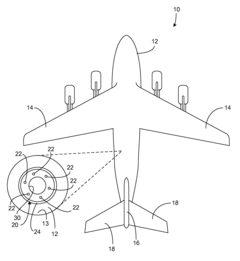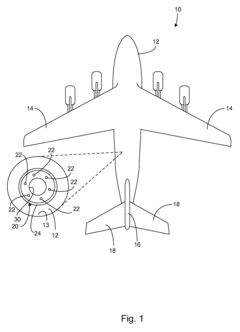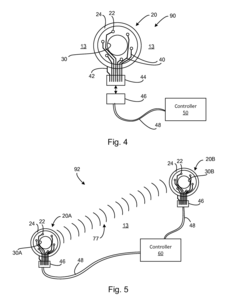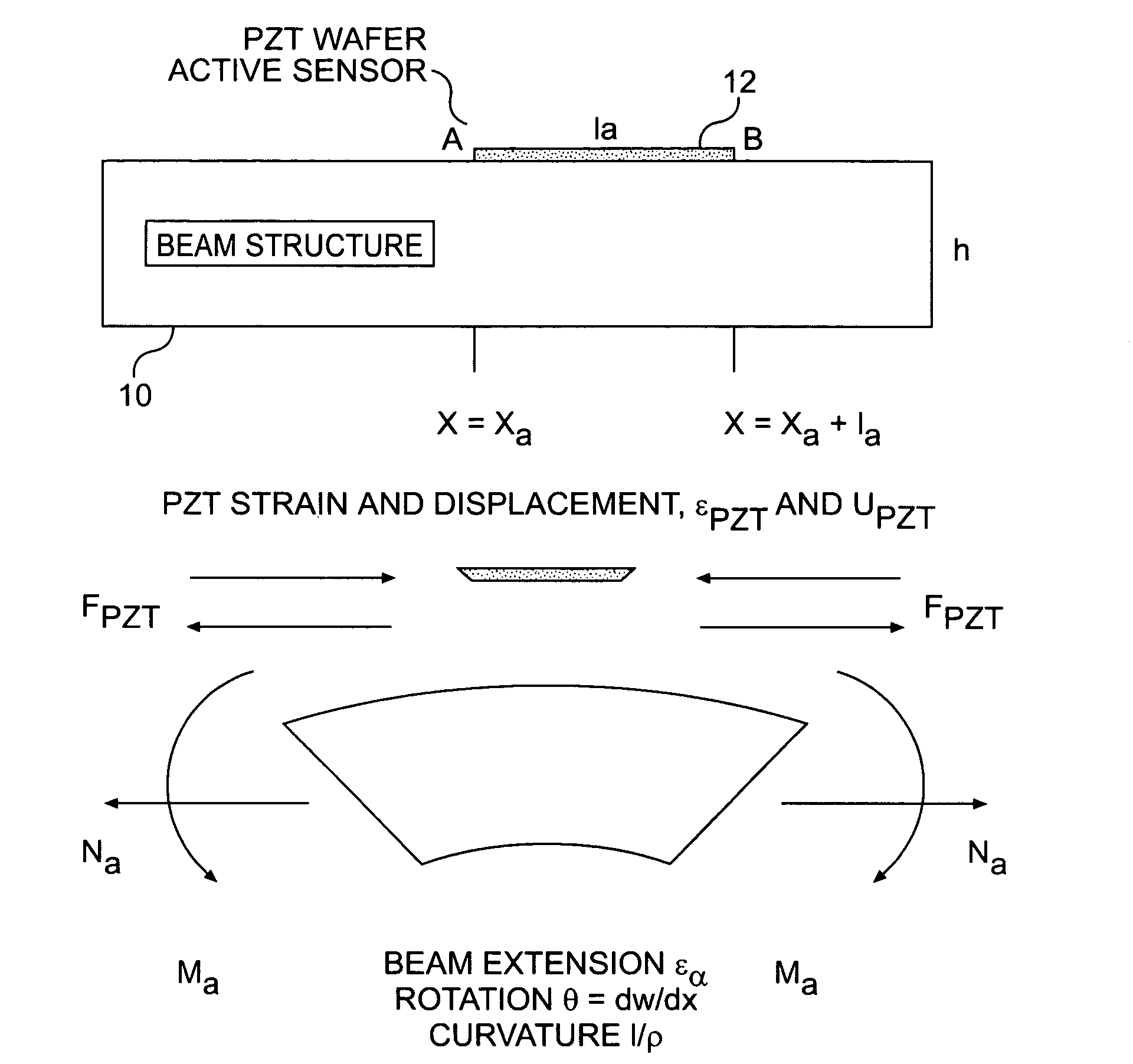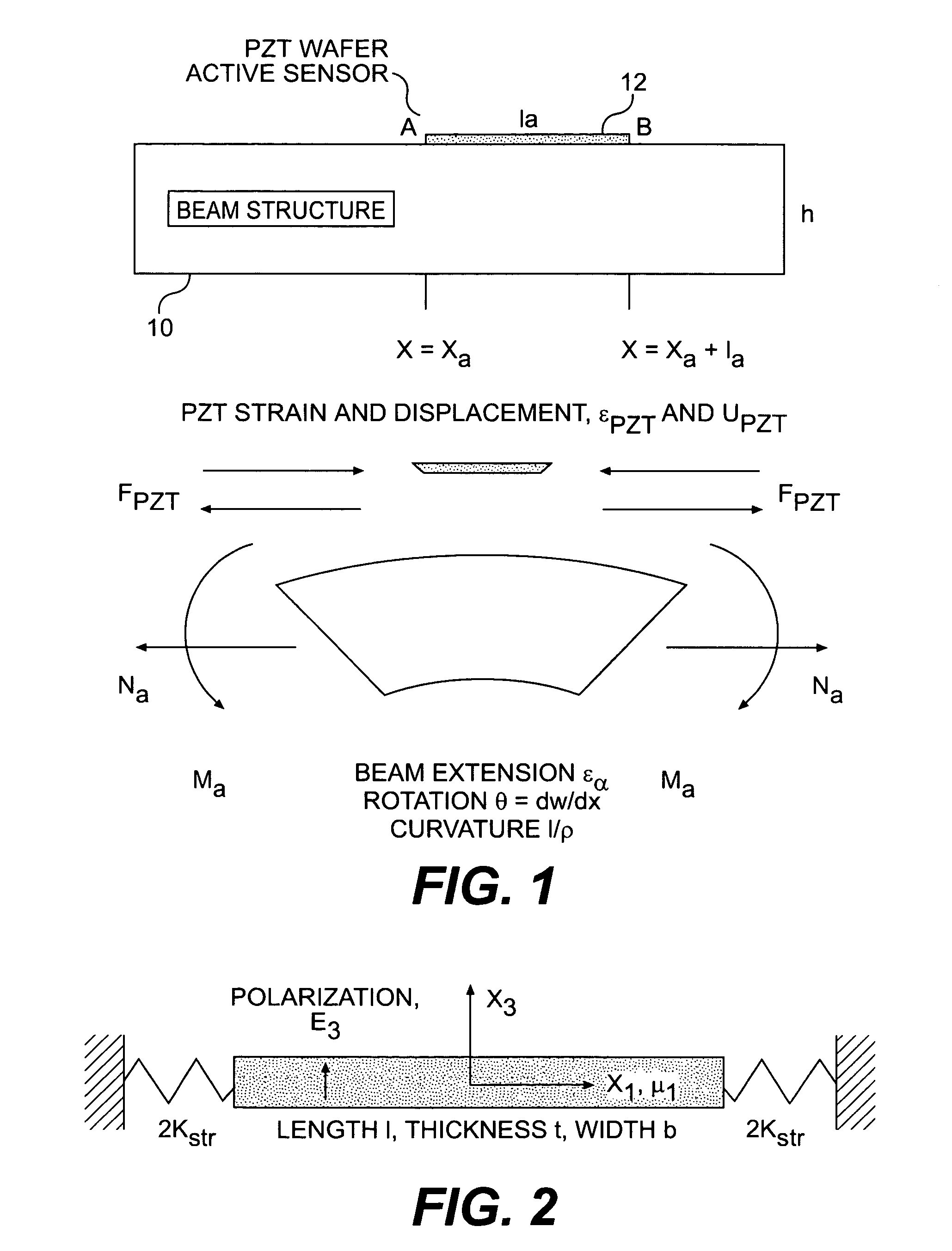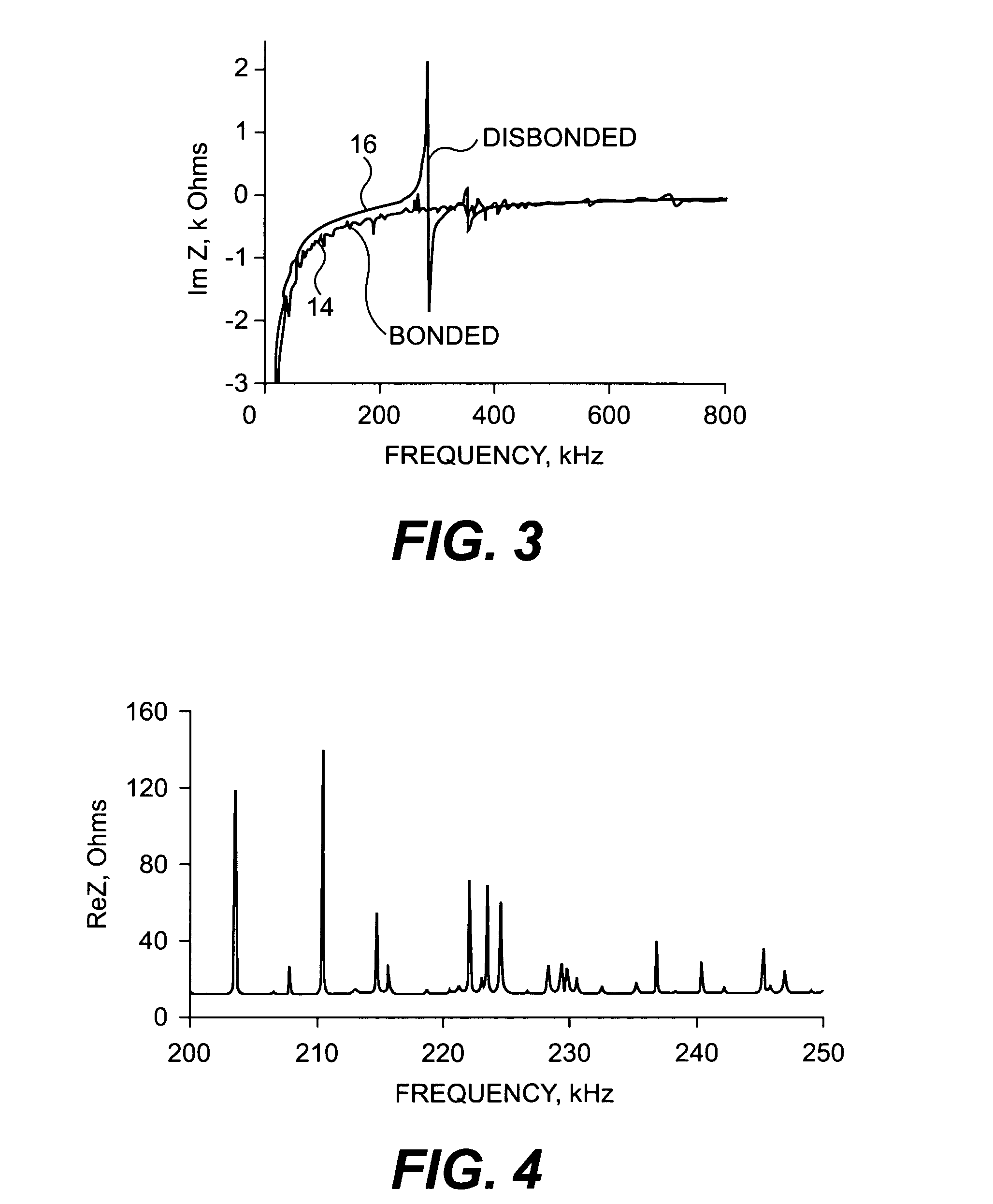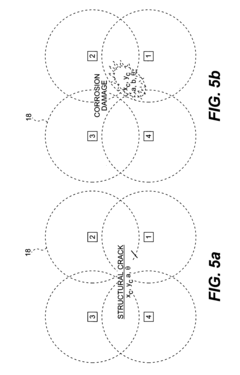How Piezoelectric Sensors Detect Structural Defects
JUL 17, 20259 MIN READ
Generate Your Research Report Instantly with AI Agent
Patsnap Eureka helps you evaluate technical feasibility & market potential.
Piezoelectric Sensing Background and Objectives
Piezoelectric sensing technology has evolved significantly over the past few decades, becoming a crucial tool in structural health monitoring and defect detection. The fundamental principle behind piezoelectric sensing lies in the unique property of certain materials to generate an electric charge when subjected to mechanical stress, and conversely, to deform when an electric field is applied. This bidirectional energy conversion capability has made piezoelectric sensors invaluable in detecting structural defects across various industries.
The development of piezoelectric sensing can be traced back to the discovery of the piezoelectric effect by Jacques and Pierre Curie in 1880. However, it wasn't until the mid-20th century that this technology found practical applications in structural defect detection. The advent of advanced materials and manufacturing techniques has since propelled piezoelectric sensing to new heights, enabling the creation of highly sensitive and versatile sensors.
In the context of structural defect detection, piezoelectric sensors have emerged as a non-destructive testing (NDT) method, offering real-time monitoring capabilities and high sensitivity to minute structural changes. These sensors can be integrated into or attached to structures, allowing for continuous assessment of structural integrity without compromising the structure itself.
The primary objective of piezoelectric sensing in structural defect detection is to identify and characterize anomalies that may compromise the safety, performance, or longevity of structures. This includes detecting cracks, delaminations, voids, and other forms of damage in materials ranging from metals and composites to concrete and polymers. By providing early warning of potential failures, piezoelectric sensing plays a critical role in preventive maintenance and risk mitigation strategies across industries such as aerospace, civil engineering, and manufacturing.
Recent technological trends in piezoelectric sensing for structural defect detection include the development of flexible and conformable sensors, the integration of wireless communication capabilities, and the application of advanced signal processing algorithms. These advancements aim to enhance the sensitivity, reliability, and ease of implementation of piezoelectric sensing systems in diverse structural environments.
As we look to the future, the goals for piezoelectric sensing in structural defect detection are multifaceted. Researchers and engineers are working towards developing more robust and durable sensors capable of withstanding harsh environmental conditions. There is also a push towards miniaturization and energy efficiency, enabling the deployment of large sensor networks for comprehensive structural monitoring. Additionally, the integration of artificial intelligence and machine learning techniques with piezoelectric sensing data promises to improve defect classification accuracy and predictive maintenance capabilities.
The development of piezoelectric sensing can be traced back to the discovery of the piezoelectric effect by Jacques and Pierre Curie in 1880. However, it wasn't until the mid-20th century that this technology found practical applications in structural defect detection. The advent of advanced materials and manufacturing techniques has since propelled piezoelectric sensing to new heights, enabling the creation of highly sensitive and versatile sensors.
In the context of structural defect detection, piezoelectric sensors have emerged as a non-destructive testing (NDT) method, offering real-time monitoring capabilities and high sensitivity to minute structural changes. These sensors can be integrated into or attached to structures, allowing for continuous assessment of structural integrity without compromising the structure itself.
The primary objective of piezoelectric sensing in structural defect detection is to identify and characterize anomalies that may compromise the safety, performance, or longevity of structures. This includes detecting cracks, delaminations, voids, and other forms of damage in materials ranging from metals and composites to concrete and polymers. By providing early warning of potential failures, piezoelectric sensing plays a critical role in preventive maintenance and risk mitigation strategies across industries such as aerospace, civil engineering, and manufacturing.
Recent technological trends in piezoelectric sensing for structural defect detection include the development of flexible and conformable sensors, the integration of wireless communication capabilities, and the application of advanced signal processing algorithms. These advancements aim to enhance the sensitivity, reliability, and ease of implementation of piezoelectric sensing systems in diverse structural environments.
As we look to the future, the goals for piezoelectric sensing in structural defect detection are multifaceted. Researchers and engineers are working towards developing more robust and durable sensors capable of withstanding harsh environmental conditions. There is also a push towards miniaturization and energy efficiency, enabling the deployment of large sensor networks for comprehensive structural monitoring. Additionally, the integration of artificial intelligence and machine learning techniques with piezoelectric sensing data promises to improve defect classification accuracy and predictive maintenance capabilities.
Market Demand for Structural Health Monitoring
The market demand for structural health monitoring (SHM) using piezoelectric sensors has been steadily increasing in recent years, driven by the growing need for reliable and cost-effective methods to assess the integrity of critical infrastructure. This demand spans across various sectors, including civil engineering, aerospace, automotive, and energy industries.
In the civil engineering sector, there is a significant push for implementing SHM systems in bridges, buildings, and other large-scale structures. The aging infrastructure in many developed countries has created a pressing need for continuous monitoring to prevent catastrophic failures and optimize maintenance schedules. Piezoelectric sensors offer a non-invasive and efficient solution for detecting structural defects, making them particularly attractive for retrofitting existing structures.
The aerospace industry has also shown a strong interest in piezoelectric sensor-based SHM systems. With the increasing use of composite materials in aircraft construction, there is a growing need for real-time monitoring of structural integrity to ensure passenger safety and reduce maintenance costs. Piezoelectric sensors can detect minute changes in structural properties, allowing for early detection of potential issues before they become critical.
In the automotive sector, the demand for SHM systems is driven by the trend towards lightweight vehicle designs and the adoption of new materials. Piezoelectric sensors can be integrated into vehicle structures to monitor stress, strain, and vibration, providing valuable data for improving safety and performance.
The energy sector, particularly in wind and nuclear power generation, has also shown significant interest in piezoelectric sensor-based SHM systems. For wind turbines, these sensors can monitor blade integrity and structural health, optimizing maintenance schedules and improving overall efficiency. In nuclear power plants, SHM systems are crucial for ensuring the safety and longevity of critical components.
The market for SHM systems using piezoelectric sensors is expected to grow substantially in the coming years. Factors contributing to this growth include increasing awareness of the importance of infrastructure maintenance, stringent safety regulations, and the need for cost-effective monitoring solutions. Additionally, the integration of SHM systems with emerging technologies such as artificial intelligence and the Internet of Things is expected to further drive market demand.
However, challenges remain in the widespread adoption of piezoelectric sensor-based SHM systems. These include the need for standardization of monitoring practices, concerns about long-term reliability and durability of sensors in harsh environments, and the initial costs associated with implementing comprehensive SHM systems. Addressing these challenges will be crucial for realizing the full market potential of this technology.
In the civil engineering sector, there is a significant push for implementing SHM systems in bridges, buildings, and other large-scale structures. The aging infrastructure in many developed countries has created a pressing need for continuous monitoring to prevent catastrophic failures and optimize maintenance schedules. Piezoelectric sensors offer a non-invasive and efficient solution for detecting structural defects, making them particularly attractive for retrofitting existing structures.
The aerospace industry has also shown a strong interest in piezoelectric sensor-based SHM systems. With the increasing use of composite materials in aircraft construction, there is a growing need for real-time monitoring of structural integrity to ensure passenger safety and reduce maintenance costs. Piezoelectric sensors can detect minute changes in structural properties, allowing for early detection of potential issues before they become critical.
In the automotive sector, the demand for SHM systems is driven by the trend towards lightweight vehicle designs and the adoption of new materials. Piezoelectric sensors can be integrated into vehicle structures to monitor stress, strain, and vibration, providing valuable data for improving safety and performance.
The energy sector, particularly in wind and nuclear power generation, has also shown significant interest in piezoelectric sensor-based SHM systems. For wind turbines, these sensors can monitor blade integrity and structural health, optimizing maintenance schedules and improving overall efficiency. In nuclear power plants, SHM systems are crucial for ensuring the safety and longevity of critical components.
The market for SHM systems using piezoelectric sensors is expected to grow substantially in the coming years. Factors contributing to this growth include increasing awareness of the importance of infrastructure maintenance, stringent safety regulations, and the need for cost-effective monitoring solutions. Additionally, the integration of SHM systems with emerging technologies such as artificial intelligence and the Internet of Things is expected to further drive market demand.
However, challenges remain in the widespread adoption of piezoelectric sensor-based SHM systems. These include the need for standardization of monitoring practices, concerns about long-term reliability and durability of sensors in harsh environments, and the initial costs associated with implementing comprehensive SHM systems. Addressing these challenges will be crucial for realizing the full market potential of this technology.
Current Challenges in Defect Detection
Despite the significant advancements in piezoelectric sensor technology for structural defect detection, several challenges persist in this field. One of the primary issues is the sensitivity and accuracy of these sensors in detecting minute defects, especially in complex structures. The ability to distinguish between actual defects and normal structural variations remains a significant hurdle, often leading to false positives or missed detections.
Another challenge lies in the interpretation of sensor data. As structures become more intricate, the signals generated by piezoelectric sensors become increasingly complex. Developing robust algorithms to analyze and interpret this data accurately is an ongoing challenge. This is particularly evident in noisy environments where external vibrations can interfere with sensor readings.
The durability and longevity of piezoelectric sensors in harsh environments pose another significant challenge. Many structures requiring defect detection are exposed to extreme conditions, such as high temperatures, corrosive substances, or constant vibrations. Ensuring that sensors maintain their sensitivity and accuracy over extended periods under these conditions is crucial yet challenging.
Power management is another area of concern, especially for remote or inaccessible structures. Developing energy-efficient sensors and systems that can operate for long periods without frequent maintenance or battery replacement is essential. This challenge is compounded when considering the need for continuous monitoring in critical structures.
Scalability presents another hurdle in defect detection using piezoelectric sensors. While these sensors work well for localized areas, applying them effectively across large-scale structures like bridges or skyscrapers remains challenging. The cost and complexity of implementing comprehensive sensor networks for such structures are significant barriers.
Integration with existing structural health monitoring systems is also a challenge. Many structures already have monitoring systems in place, and incorporating piezoelectric sensors into these existing frameworks without disrupting current operations can be complex. Ensuring compatibility and seamless data integration between different systems is crucial for widespread adoption.
Lastly, there's the challenge of standardization. The lack of uniform standards for piezoelectric sensor implementation and data interpretation across different industries and applications hinders the widespread adoption of this technology. Developing and implementing standardized practices for sensor deployment, data collection, and analysis is essential for the broader acceptance and reliability of piezoelectric-based defect detection systems.
Another challenge lies in the interpretation of sensor data. As structures become more intricate, the signals generated by piezoelectric sensors become increasingly complex. Developing robust algorithms to analyze and interpret this data accurately is an ongoing challenge. This is particularly evident in noisy environments where external vibrations can interfere with sensor readings.
The durability and longevity of piezoelectric sensors in harsh environments pose another significant challenge. Many structures requiring defect detection are exposed to extreme conditions, such as high temperatures, corrosive substances, or constant vibrations. Ensuring that sensors maintain their sensitivity and accuracy over extended periods under these conditions is crucial yet challenging.
Power management is another area of concern, especially for remote or inaccessible structures. Developing energy-efficient sensors and systems that can operate for long periods without frequent maintenance or battery replacement is essential. This challenge is compounded when considering the need for continuous monitoring in critical structures.
Scalability presents another hurdle in defect detection using piezoelectric sensors. While these sensors work well for localized areas, applying them effectively across large-scale structures like bridges or skyscrapers remains challenging. The cost and complexity of implementing comprehensive sensor networks for such structures are significant barriers.
Integration with existing structural health monitoring systems is also a challenge. Many structures already have monitoring systems in place, and incorporating piezoelectric sensors into these existing frameworks without disrupting current operations can be complex. Ensuring compatibility and seamless data integration between different systems is crucial for widespread adoption.
Lastly, there's the challenge of standardization. The lack of uniform standards for piezoelectric sensor implementation and data interpretation across different industries and applications hinders the widespread adoption of this technology. Developing and implementing standardized practices for sensor deployment, data collection, and analysis is essential for the broader acceptance and reliability of piezoelectric-based defect detection systems.
Existing Piezoelectric Defect Detection Methods
01 Detection of structural defects using piezoelectric sensors
Piezoelectric sensors can be utilized to detect and monitor structural defects in various materials and structures. These sensors can convert mechanical stress or vibrations into electrical signals, allowing for the identification of anomalies or changes in the structural integrity of the monitored object.- Detection of structural defects using piezoelectric sensors: Piezoelectric sensors can be utilized to detect structural defects in various materials and structures. These sensors generate electrical signals in response to mechanical stress, allowing for the identification of cracks, deformations, or other structural anomalies. This technology can be applied in fields such as aerospace, civil engineering, and manufacturing for non-destructive testing and structural health monitoring.
- Piezoelectric sensor arrays for improved defect detection: Arrays of piezoelectric sensors can be employed to enhance the detection and localization of structural defects. By using multiple sensors in a coordinated manner, it is possible to create a more comprehensive map of potential defects across a larger area or complex structure. This approach improves the accuracy and reliability of defect detection in various applications.
- Integration of piezoelectric sensors in smart structures: Piezoelectric sensors can be integrated into smart structures to provide real-time monitoring of structural integrity. These sensors can be embedded within materials or attached to surfaces, allowing for continuous assessment of structural health. This integration enables early detection of defects and can trigger automated responses or alerts for maintenance.
- Signal processing techniques for piezoelectric sensor data: Advanced signal processing techniques are crucial for interpreting data from piezoelectric sensors to accurately identify structural defects. These methods may include filtering, pattern recognition, and machine learning algorithms to distinguish between normal structural responses and indications of defects. Improved signal processing enhances the sensitivity and specificity of defect detection systems.
- Piezoelectric sensors for specific structural applications: Specialized piezoelectric sensors can be designed for specific structural applications, such as monitoring bridges, aircraft components, or industrial equipment. These sensors are tailored to the unique characteristics and requirements of each application, considering factors like environmental conditions, material properties, and expected types of defects. This customization improves the effectiveness of structural defect detection in diverse fields.
02 Fabrication techniques for piezoelectric sensors
Advanced fabrication techniques are employed to create piezoelectric sensors with improved sensitivity and reliability for structural defect detection. These methods may include thin-film deposition, microfabrication processes, and novel material combinations to enhance sensor performance.Expand Specific Solutions03 Integration of piezoelectric sensors in structural health monitoring systems
Piezoelectric sensors are integrated into comprehensive structural health monitoring systems to provide real-time data on the condition of buildings, bridges, and other infrastructure. These systems can detect early signs of structural defects and enable proactive maintenance strategies.Expand Specific Solutions04 Signal processing and data analysis for defect characterization
Advanced signal processing techniques and data analysis algorithms are developed to interpret the output from piezoelectric sensors. These methods help in characterizing the nature, location, and severity of structural defects, improving the accuracy and reliability of defect detection.Expand Specific Solutions05 Piezoelectric sensor arrays for comprehensive structural assessment
Arrays of piezoelectric sensors are designed and deployed to provide comprehensive coverage of large structures. This approach allows for more detailed mapping of structural defects and enables the detection of subtle changes in structural integrity over time.Expand Specific Solutions
Key Players in Structural Health Monitoring
The piezoelectric sensor market for structural defect detection is in a growth phase, driven by increasing demand for non-destructive testing in various industries. The global market size is projected to expand significantly in the coming years, fueled by advancements in sensor technology and rising infrastructure investments. Technologically, piezoelectric sensors are relatively mature, with ongoing innovations focused on improving sensitivity and reliability. Key players like Murata Manufacturing, HELLA, and Panasonic are leading the field, leveraging their expertise in sensor technology and electronics to develop advanced solutions for structural health monitoring. Universities and research institutions, such as the University of Adelaide and Fraunhofer-Gesellschaft, are also contributing to technological advancements through collaborative research and development efforts.
Murata Manufacturing Co. Ltd.
Technical Solution: Murata Manufacturing Co. Ltd. has developed advanced piezoelectric sensors for structural health monitoring. Their technology utilizes high-sensitivity piezoelectric elements to detect minute vibrations and acoustic emissions in structures. The sensors are designed with a wide frequency range, typically from 100 Hz to 1 MHz[1], allowing for the detection of various defect types. Murata's sensors employ a unique multi-layer ceramic construction that enhances sensitivity while maintaining durability in harsh environments[2]. The company has also integrated their sensors with wireless communication capabilities, enabling real-time data transmission and remote monitoring of structural integrity[3]. This system can detect and localize defects such as cracks, delaminations, and fatigue damage in materials ranging from concrete to composites.
Strengths: High sensitivity, wide frequency range, durability in harsh environments, wireless capabilities. Weaknesses: May require complex signal processing for data interpretation, potential for false positives in noisy environments.
The Boeing Co.
Technical Solution: Boeing has developed a comprehensive Structural Health Monitoring (SHM) system using piezoelectric sensors for aircraft structures. Their approach combines an array of distributed piezoelectric sensors with advanced signal processing algorithms. The system uses both active and passive sensing techniques[1]. In active sensing, the piezoelectric elements generate guided waves that propagate through the structure and are received by other sensors, with any changes in the wave characteristics indicating potential defects[2]. For passive sensing, the system continuously monitors for acoustic emissions that may signify crack growth or impact damage. Boeing's technology incorporates machine learning algorithms to analyze sensor data and differentiate between normal structural responses and potential defects, reducing false alarms[3]. The company has also developed specialized sensor designs that can be integrated into composite structures during manufacturing, allowing for seamless monitoring throughout the aircraft's lifecycle.
Strengths: Comprehensive active and passive sensing capabilities, integration with composite structures, advanced signal processing and machine learning. Weaknesses: High initial implementation cost, complexity in retrofitting existing aircraft.
Core Innovations in Piezoelectric Sensing
Piezoelectric sensor configuration for detecting damage in a structure
PatentActiveUS20150338306A1
Innovation
- A system and method utilizing a circular arrangement of piezoelectric sensing elements, including an annular-shaped element, to generate and sense waves through the structure, providing comprehensive damage detection without disassembly, with a controller to switch between modes for enhanced detection capabilities.
In-situ structural health monitoring, diagnostics and prognostics system utilizing thin piezoelectric sensors
PatentInactiveUS7024315B2
Innovation
- Embedding thin piezoelectric ceramic sensors on structures to detect damage features by generating and receiving elastic waves, analyzing changes in electromechanical impedance spectra to identify incipient damage and corrosion, using active and passive sensing methods with sensor arrays for precise location and characterization of defects.
Regulatory Framework for Structural Monitoring
The regulatory framework for structural monitoring using piezoelectric sensors is a critical aspect of ensuring the safety and integrity of buildings, bridges, and other infrastructure. Governments and industry bodies worldwide have established guidelines and standards to govern the implementation and use of these advanced sensing technologies.
In the United States, the Federal Highway Administration (FHWA) has developed comprehensive guidelines for structural health monitoring systems, including those utilizing piezoelectric sensors. These guidelines outline the requirements for sensor placement, data collection frequency, and reporting protocols. Similarly, the American Society of Civil Engineers (ASCE) has published standards that specifically address the use of piezoelectric sensors in structural health monitoring applications.
The European Union has implemented the Eurocodes, a set of harmonized technical rules for structural design. Within this framework, specific provisions are made for the integration of structural health monitoring systems, including those based on piezoelectric technology. The European Committee for Standardization (CEN) has also developed standards for the application of piezoelectric sensors in civil engineering structures.
In Japan, known for its advanced earthquake engineering practices, the Ministry of Land, Infrastructure, Transport and Tourism (MLIT) has established regulations for structural monitoring systems. These regulations emphasize the importance of real-time data collection and analysis, particularly in seismically active regions.
International organizations such as the International Organization for Standardization (ISO) have developed global standards for structural health monitoring. ISO 16587:2004, for instance, provides guidelines for data acquisition systems in the monitoring of civil engineering structures, which is applicable to piezoelectric sensor-based systems.
Regulatory frameworks also address data management and privacy concerns associated with structural monitoring. Many jurisdictions require secure data storage and transmission protocols to protect sensitive information about critical infrastructure. Additionally, regulations often mandate regular calibration and maintenance of sensor systems to ensure accuracy and reliability of the collected data.
As the technology evolves, regulatory bodies are continuously updating their frameworks to accommodate new developments in piezoelectric sensor technology and data analysis methods. This includes provisions for machine learning and artificial intelligence applications in structural health monitoring, as well as the integration of Internet of Things (IoT) platforms for more comprehensive and interconnected monitoring systems.
In the United States, the Federal Highway Administration (FHWA) has developed comprehensive guidelines for structural health monitoring systems, including those utilizing piezoelectric sensors. These guidelines outline the requirements for sensor placement, data collection frequency, and reporting protocols. Similarly, the American Society of Civil Engineers (ASCE) has published standards that specifically address the use of piezoelectric sensors in structural health monitoring applications.
The European Union has implemented the Eurocodes, a set of harmonized technical rules for structural design. Within this framework, specific provisions are made for the integration of structural health monitoring systems, including those based on piezoelectric technology. The European Committee for Standardization (CEN) has also developed standards for the application of piezoelectric sensors in civil engineering structures.
In Japan, known for its advanced earthquake engineering practices, the Ministry of Land, Infrastructure, Transport and Tourism (MLIT) has established regulations for structural monitoring systems. These regulations emphasize the importance of real-time data collection and analysis, particularly in seismically active regions.
International organizations such as the International Organization for Standardization (ISO) have developed global standards for structural health monitoring. ISO 16587:2004, for instance, provides guidelines for data acquisition systems in the monitoring of civil engineering structures, which is applicable to piezoelectric sensor-based systems.
Regulatory frameworks also address data management and privacy concerns associated with structural monitoring. Many jurisdictions require secure data storage and transmission protocols to protect sensitive information about critical infrastructure. Additionally, regulations often mandate regular calibration and maintenance of sensor systems to ensure accuracy and reliability of the collected data.
As the technology evolves, regulatory bodies are continuously updating their frameworks to accommodate new developments in piezoelectric sensor technology and data analysis methods. This includes provisions for machine learning and artificial intelligence applications in structural health monitoring, as well as the integration of Internet of Things (IoT) platforms for more comprehensive and interconnected monitoring systems.
Environmental Impact of Piezoelectric Sensors
The environmental impact of piezoelectric sensors in structural defect detection is multifaceted, encompassing both positive and negative aspects. These sensors offer significant advantages in terms of sustainability and resource conservation. By enabling early detection of structural defects, piezoelectric sensors contribute to the prolonged lifespan of buildings, bridges, and other infrastructure. This extended durability reduces the need for frequent replacements and repairs, thereby conserving raw materials and energy resources associated with construction and maintenance activities.
Moreover, the use of piezoelectric sensors in structural health monitoring systems leads to improved safety and reduced risk of catastrophic failures. This proactive approach not only prevents potential environmental disasters but also minimizes the environmental impact of emergency response and cleanup operations that would be necessary in the event of structural collapse.
However, the production and disposal of piezoelectric sensors themselves present certain environmental challenges. The manufacturing process of these sensors often involves the use of lead-based materials, which can pose environmental and health risks if not properly managed. While efforts are being made to develop lead-free alternatives, the transition is still ongoing in many applications.
The electronic components and circuitry associated with piezoelectric sensor systems also contribute to electronic waste (e-waste) when they reach the end of their operational life. Proper recycling and disposal of these components are crucial to mitigate their environmental impact. Additionally, the energy consumption of sensor networks, particularly in large-scale monitoring systems, should be considered in the overall environmental assessment.
On a positive note, the compact size and low power requirements of piezoelectric sensors make them relatively eco-friendly compared to other sensing technologies. Their ability to harvest energy from ambient vibrations can potentially reduce or eliminate the need for external power sources in some applications, further enhancing their environmental credentials.
In the context of structural defect detection, piezoelectric sensors enable non-destructive testing methods. This approach minimizes the need for invasive inspection techniques that might otherwise require material removal or damage to structures, thereby reducing waste generation and resource consumption associated with traditional inspection methods.
As the technology continues to evolve, ongoing research is focused on developing more environmentally friendly piezoelectric materials and improving the energy efficiency of sensor systems. These advancements aim to further reduce the environmental footprint of piezoelectric sensors while enhancing their capabilities in structural defect detection.
Moreover, the use of piezoelectric sensors in structural health monitoring systems leads to improved safety and reduced risk of catastrophic failures. This proactive approach not only prevents potential environmental disasters but also minimizes the environmental impact of emergency response and cleanup operations that would be necessary in the event of structural collapse.
However, the production and disposal of piezoelectric sensors themselves present certain environmental challenges. The manufacturing process of these sensors often involves the use of lead-based materials, which can pose environmental and health risks if not properly managed. While efforts are being made to develop lead-free alternatives, the transition is still ongoing in many applications.
The electronic components and circuitry associated with piezoelectric sensor systems also contribute to electronic waste (e-waste) when they reach the end of their operational life. Proper recycling and disposal of these components are crucial to mitigate their environmental impact. Additionally, the energy consumption of sensor networks, particularly in large-scale monitoring systems, should be considered in the overall environmental assessment.
On a positive note, the compact size and low power requirements of piezoelectric sensors make them relatively eco-friendly compared to other sensing technologies. Their ability to harvest energy from ambient vibrations can potentially reduce or eliminate the need for external power sources in some applications, further enhancing their environmental credentials.
In the context of structural defect detection, piezoelectric sensors enable non-destructive testing methods. This approach minimizes the need for invasive inspection techniques that might otherwise require material removal or damage to structures, thereby reducing waste generation and resource consumption associated with traditional inspection methods.
As the technology continues to evolve, ongoing research is focused on developing more environmentally friendly piezoelectric materials and improving the energy efficiency of sensor systems. These advancements aim to further reduce the environmental footprint of piezoelectric sensors while enhancing their capabilities in structural defect detection.
Unlock deeper insights with Patsnap Eureka Quick Research — get a full tech report to explore trends and direct your research. Try now!
Generate Your Research Report Instantly with AI Agent
Supercharge your innovation with Patsnap Eureka AI Agent Platform!
